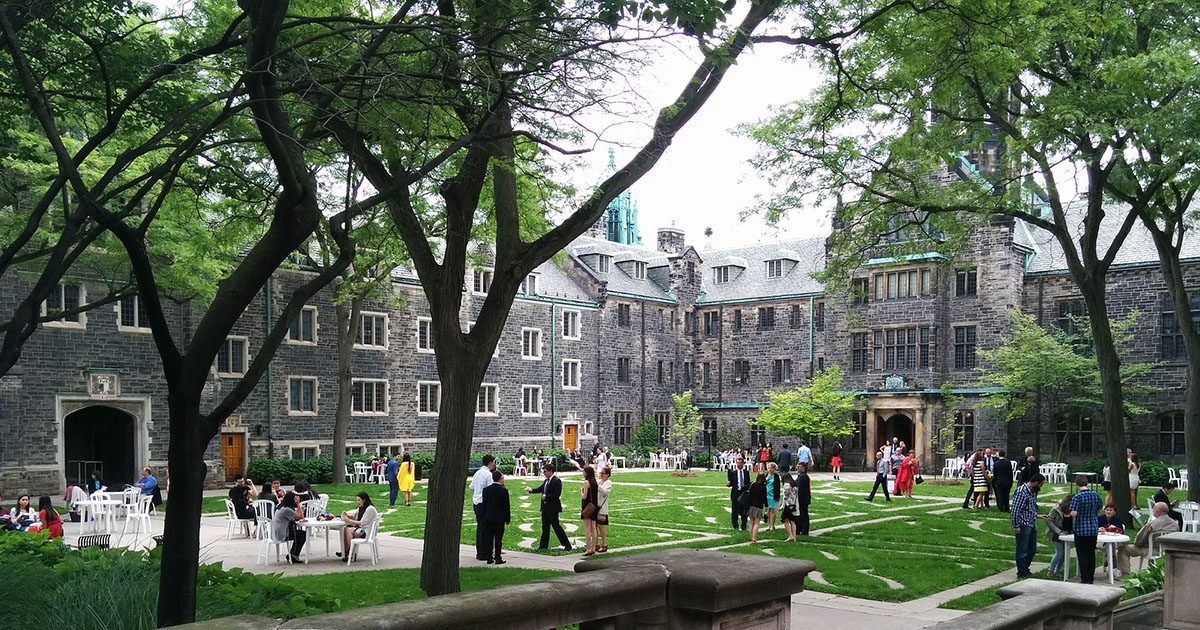What Do Universities Owe Their Students?
IPR legal experts explain how the pandemic challenged the university-student contract
Get all our news
We would allow significant room for freedom of contract, for different universities to offer different environments. But the law should push universities to disclose this up front and hold universities to their promises. ”
Max Schanzenbach
Law professor and IPR associate

By the end of March 2020, over 4,000 colleges and universities across the country had closed their campuses in response to the COVID-19 outbreak, affecting more than 25 million students. Eighty-four percent of U.S. undergraduates had some or all their classes online during spring 2020. Many schools did not resume in-person classes until the winter of 2022, and many mandated students be vaccinated against the virus.
These unprecedented disruptions to higher education led to lawsuits against universities. Students sought tuition refunds, claiming that remote learning is not equivalent to in-person, as well as reimbursement for on-campus housing and dining. Suits for refunds against over 70 universities were filed as of March 2022.
The litigation raises fundamental questions about the legal relationship between a college and its students.
In a recent IPR colloquium, law professor and IPR associate Max Schanzenbach asked what universities promise their students in exchange for tuition. He and his law school colleague, IPR associate Kim Yuracko, discuss the question in greater depth in a new working paper.
“The COVID-19 litigation focuses on whether the decisions universities made during the pandemic, which significantly changed the college experience, violated their contractual obligations to students. This question depends most directly on the nature and terms of the contract between the university and its students,” Yuracko explained.
The courts are not consistent in their view of the university-student contract, so any remedies for breach of contract between the parties are also unclear.
“Courts across the country came to widely different conclusions on whether the university-student contract included a promise of in-person instruction and access to campus,” Schanzenbach said. “We believe that universities have at times benefited from their own lack of clarity about the agreement, allowing universities to appear to make promises in communications and student handbooks that courts will sometimes decline to enforce.”
Schanzenbach and Yuracko outline three possible ways of answering the fundamental question of what universities promise to do for their students, one or more of which may be preferable for framing courts’ decision making.
Perhaps all that universities owe students is the delivery of courses and awarding credits and degrees. Students’ degrees signal eligibility and provide a sorting function, informing employers of which students can do college-level work.
A second understanding of the contract is that universities promise goods for consumption, such as enjoyable classes, social events, athletics, and comfortable dorms.
A third perspective, one emphasized in admissions brochures and student handbooks, is that universities provide students with a community that develops skills useful in the labor market—that is, the university develops human capital through a wide range of curricular and extra-curricular activities. By its nature, such a contract requires in-person classes, dorm life, clubs, and more.
Schanzenbach pointed out in his talk that under the human capital model, universities did not follow through on their agreement since the pandemic closures made in-person community impossible.
“Remedies, it turns out as a legal matter, are going to be founded on whether or not there was a contract—even if the governor said you had to close schools, and it became impossible to hold in-person classes. Under very basic legal principles of restitution, the university may at least owe a refund for promises they couldn’t deliver on,” he stated.
Schanzenbach and Yuracko argue that the human capital model is the best way to describe the university-student contract. They point to universities’ extensive reliance on human capital focused language and promises in their student handbooks as support.
The researchers also note that if the contract promises students’ human capital development—and the learning community that is necessary for that to happen—then it also gives universities the right to protect the community with things like the COVID vaccine mandate.
The ongoing litigation around COVID closures and mandates will lead to more explicit contracts, and courts will scrutinize universities’ promises more closely in the future, Yuracko and Schanzenbach conclude.
“We would allow significant room for freedom of contract, for different universities to offer different environments,” Schanzenbach said. “But the law should push universities to disclose this up front and hold universities to their promises.”
The working paper is forthcoming in the Arizona Law Review.
Max Schanzenbach is Seigle Family Professor of Law. Kimberly Yuracko is Judd and Mary Morris Leighton Professor of Law. Both are IPR associates.
Photo credit: Pixabay
Published: August 30, 2023.


